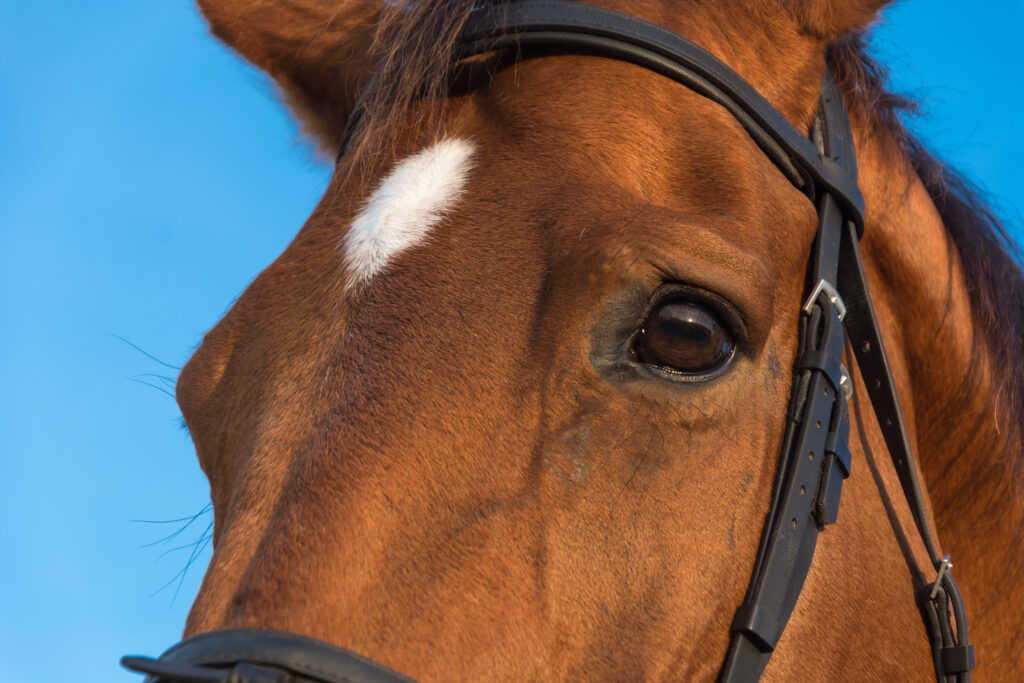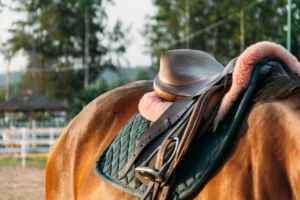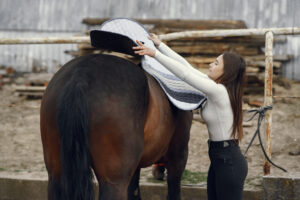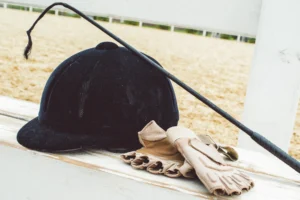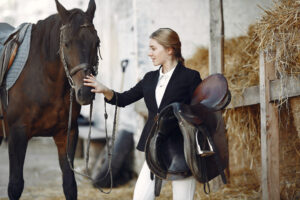Introduction
The equine eye is a marvel of evolution—large, expressive, and remarkably adapted to provide horses with nearly 360-degree vision. However, this prominent feature is also vulnerable to a range of infections and conditions that can quickly escalate from minor irritation to sight-threatening emergencies. As horse owners and caretakers, understanding the horse eye anatomy and recognizing early signs of horse eye infection is crucial for preventing serious complications.
Horse eye infections often begin subtly, with symptoms that can be easily overlooked until they’ve progressed to dangerous levels. This article explores five particularly insidious horse eye conditions that can develop rapidly if left untreated, potentially leading to permanent vision loss or even necessitating eye removal in severe cases.
Whether you’re a seasoned equestrian or new to horse care, this comprehensive guide will equip you with the knowledge to identify, prevent, and seek appropriate treatment for common horse eye infections before they become silent killers.
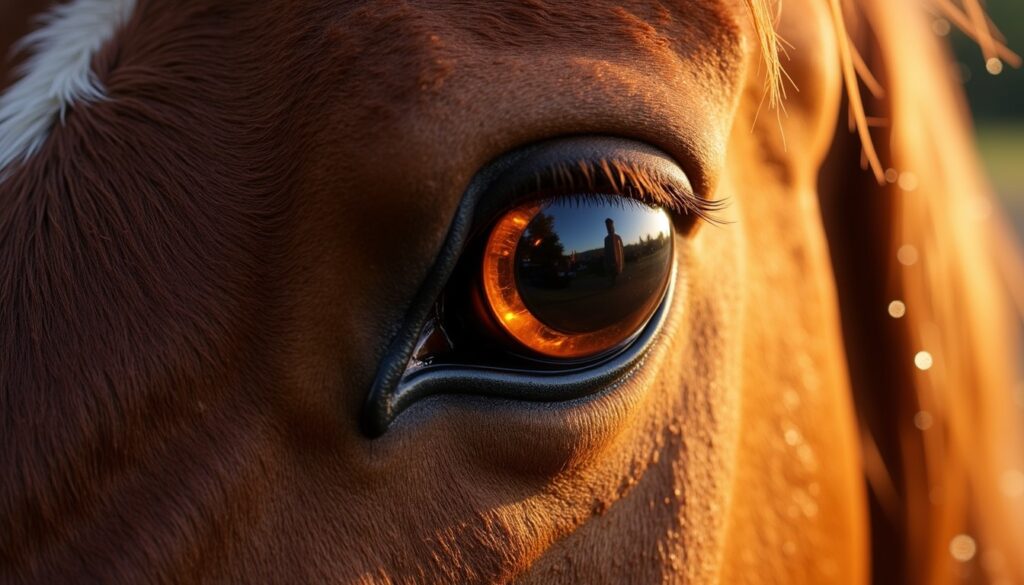
Understanding Horse Eye Anatomy: The Foundation of Eye Health
Before delving into specific infections, it’s essential to understand the basic horse eye anatomy. The equine eye is the largest among land mammals, with a distinctive horizontal pupil that enhances peripheral vision—a critical adaptation for prey animals.
Key Components of the Horse Eye Structure
The horse eye consists of several important structures, each susceptible to different types of infections:
- Cornea: The transparent outer layer that covers the front of the eye. It’s highly sensitive and often the first site of infection or injury.
- Conjunctiva: The membrane lining the inner eyelids and covering the white part of the eye. Inflammation here (conjunctivitis) is a common horse eye problem.
- Iris: The colored portion of the eye that controls light entry. Horse eye color typically ranges from brown to blue, with variations affecting UV sensitivity.
- Lens: Located behind the pupil, this structure focuses light onto the retina. Cataracts can develop here, especially in aging horses.
- Vitreous Humor: The gel-like substance filling the eyeball, providing structure and clarity.
- Retina: The light-sensitive layer at the back of the eye that converts images into nerve signals.
- Optic Nerve: Transmits visual information from the retina to the brain.
Understanding this complex structure helps explain why horse eye care is so critical—damage to any component can impact overall vision and eye health. Horses rely heavily on their eyesight for safety, navigation, and interaction, making proper horse eye treatment essential when problems arise.
Silent Killer #1: Equine Recurrent Uveitis (ERU)
Equine Recurrent Uveitis, often called “moon blindness,” is perhaps the most notorious horse eye infection and a leading cause of blindness in horses worldwide. What makes ERU particularly dangerous is its recurrent nature and the fact that early episodes may be mild and easy to miss.
Recognizing ERU Symptoms
The horse eye with ERU may show:
- Squinting or excessive blinking
- Tearing or watery discharge
- Cloudy appearance to the horse eye
- Light sensitivity
- Swelling around the eye
- Redness of the conjunctiva
- Constricted pupil
- Changes in horse eye color or appearance
According to a study published in the Equine Veterinary Journal, approximately 8-25% of horses in the United States suffer from ERU during their lifetime, with certain breeds like Appaloosas having genetic predispositions making them up to eight times more likely to develop the condition.
Why ERU Is a Silent Killer
ERU is dangerous because:
- It’s recurrent: After the first episode, flare-ups become increasingly common and severe.
- Each episode causes cumulative damage: Even with treatment, some damage occurs with each flare-up.
- It can be triggered by seemingly unrelated factors: Stress, minor injuries, or systemic infections can trigger episodes.
- Early symptoms may resolve temporarily: Leading owners to believe the horse eye problem has cleared up without treatment.
Treatment and Management
Treatment typically involves:
- Anti-inflammatory medications (topical and systemic)
- Medications to dilate the pupil and reduce pain
- Immunosuppressive therapy in chronic cases
- Specialized surgery in advanced cases
Dr. Brian Gilger, a veterinary ophthalmologist at North Carolina State University College of Veterinary Medicine, recommends regular eye examinations for horses with a history of ERU, noting that “proactive management significantly improves long-term outcomes and reduces the likelihood of permanent vision loss.”
For horses with recurring episodes, preventative measures might include special UV-protective fly masks and controlled environmental conditions to minimize triggers. Regular veterinary check-ups are essential for horses with a history of ERU, as early intervention during flare-ups minimizes damage to the horse eye structure.
Silent Killer #2: Fungal Keratitis
Fungal keratitis is an insidious infection of the cornea caused by fungi that is particularly prevalent in warm, humid climates. What makes this horse eye infection especially dangerous is that it often begins with a tiny scratch or injury that seems inconsequential but creates an entry point for fungal organisms.
Identifying Fungal Keratitis
Signs of fungal keratitis in the horse eye include:
- A yellowish or whitish discoloration on the cornea
- Corneal ulceration
- Progressive cloudiness in the horse eye
- Persistent squinting
- Yellow or gray discharge
- Increasing pain and light sensitivity
- Deterioration despite antibiotic treatment
Fungal keratitis presents a significant diagnostic challenge because its symptoms can initially resemble bacterial infections, leading to misdiagnosis and improper treatment. According to research published in Veterinary Ophthalmology, fungal organisms are isolated in approximately 25-45% of infectious keratitis cases in horses, with Aspergillus and Fusarium species being the most common culprits.
The Danger of Delayed Treatment
What makes fungal keratitis a potential silent killer is its:
- Slow initial progression: Early symptoms may be subtle and develop gradually.
- Resistance to common treatments: Antibiotics are ineffective against fungi.
- Ability to penetrate deeply: Fungi can burrow into the cornea, causing serious structural damage.
- Potential for corneal melting: Enzymes released during infection can literally dissolve corneal tissue.
Treatment Approaches
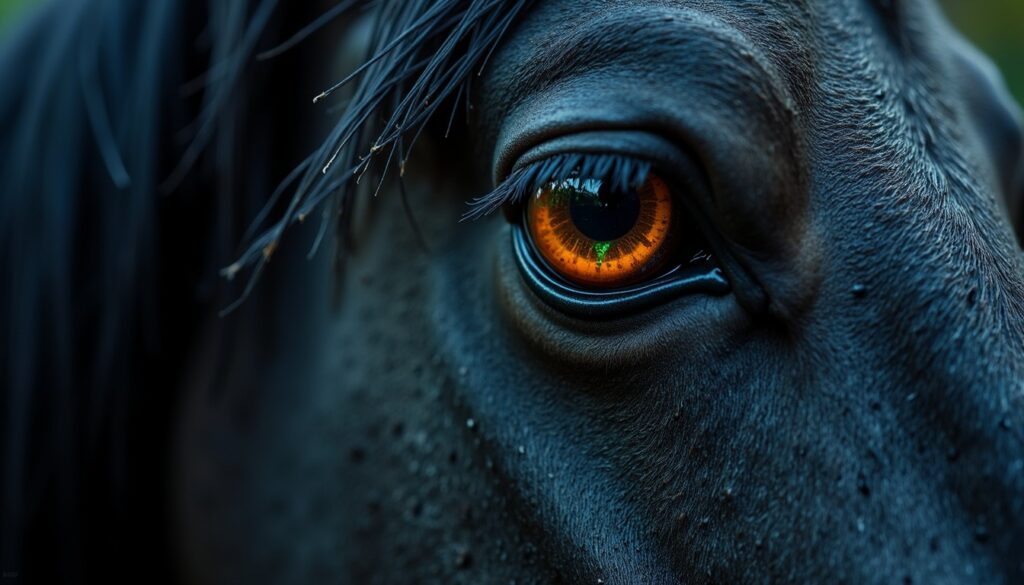
Treatment typically requires:
- Aggressive antifungal medication (topical and sometimes systemic)
- Frequent application of medications (often every 1-2 hours initially)
- Pain management
- Protective measures to prevent further injury
- Surgical intervention in severe cases
Dr. Dennis Brooks, professor emeritus at the University of Florida College of Veterinary Medicine and a leading expert in equine ophthalmology, emphasizes that “early and aggressive treatment of fungal keratitis is critical to saving the horse’s vision. A delay of even 24-48 hours can significantly worsen the prognosis.”
Horse eye medication for fungal keratitis often includes topical antifungals like natamycin, voriconazole, or itraconazole. Treatment regimens are intensive, requiring dedication from caretakers who must administer drops frequently while managing the horse’s comfort and preventing self-trauma.
Silent Killer #3: Corneal Ulcers
Corneal ulcers represent one of the most common yet potentially serious horse eye problems. These painful erosions of the corneal surface can range from superficial scratches to deep lesions that threaten the integrity of the eye. What makes corneal ulcers particularly dangerous is their potential to worsen rapidly if not properly treated.
Recognizing Corneal Ulcers
Signs of a horse eye ulcer include:
- Excessive tearing or discharge
- Squinting or keeping the eye closed
- Visible cloudy spot on the cornea
- Redness and inflammation
- Sensitivity to light
- Rubbing the eye against objects
- Swelling around the eye
- Changes in behavior due to pain
A 2019 study in the Journal of Equine Veterinary Science found that approximately 30% of equine eye emergencies involve corneal ulcers, with environmental factors such as dusty conditions, trauma from plant material, and mechanical irritation being common causes.
The Progression of Danger
Horse eye ulcers become dangerous when:
- Secondary infection sets in: Bacteria or fungi can colonize the ulcer, leading to deeper infection.
- Melting occurs: Certain infections release enzymes that can rapidly dissolve corneal tissue.
- Perforation threatens: Deep ulcers may threaten the integrity of the eye itself.
- Treatment is delayed: What begins as a simple ulcer can rapidly progress within days or even hours.
Treatment and Management
Proper horse eye treatment for corneal ulcers typically includes:
- Antibiotic or antifungal medications (depending on the cause)
- Atropine to dilate the pupil and reduce pain
- Serum therapy (using the horse’s own serum) for melting ulcers
- Anti-inflammatory medications (used judiciously)
- Protective fly mask to reduce irritation
- Frequent monitoring and veterinary rechecks
Dr. Ann Dwyer, a respected equine ophthalmologist and past president of the American Association of Equine Practitioners, notes that “corneal ulcers in horses should always be treated as emergencies. What appears minor can quickly become vision-threatening within 24-48 hours.”
For melting ulcers specifically, horse eye care may include medications containing serum or plasma, which contain protease inhibitors to stop the enzymatic destruction of corneal tissue. In severe cases, surgical interventions such as conjunctival grafts or corneal transplantation may be necessary to save the eye.
Silent Killer #4: Bacterial Conjunctivitis
Bacterial conjunctivitis—inflammation of the conjunctiva caused by bacterial infection—might seem relatively benign compared to other conditions on this list, but its ability to spread rapidly and potentially escalate to more serious infections makes it a silent threat to horse eye health.
Identifying Bacterial Conjunctivitis
Signs of bacterial conjunctivitis affecting the horse eye include:
- Redness of the conjunctival membranes
- Thick, yellow-green discharge (different from clear tearing)
- Swelling of the eyelids and surrounding tissues
- Squinting or blinking excessively
- Rubbing the eye against objects
- Visible third eyelid protrusion
- Crusting around the eye
According to data from the American College of Veterinary Ophthalmologists, bacterial conjunctivitis accounts for approximately 15-20% of all equine ocular presentations, with Streptococcus and Staphylococcus being the most commonly isolated bacteria.
Why Bacterial Conjunctivitis Can Turn Dangerous
This condition becomes problematic when:
- It masks deeper infections: The symptoms may seem like “just conjunctivitis” when more serious conditions are developing.
- Inappropriate treatment is applied: Using the wrong medication can worsen the condition.
- It spreads to other horses: Bacterial conjunctivitis can be highly contagious.
- It extends to the cornea: What begins as conjunctivitis can progress to involve the cornea.
- Chronic inflammation develops: Persistent untreated infections can lead to permanent changes.
Effective Treatment Approaches
Proper horse eye treatment typically includes:
- Bacterial culture and sensitivity testing to identify the specific organism
- Appropriate antibiotic therapy (topical and sometimes systemic)
- Gentle cleaning of discharge with sterile saline solution
- Isolation of affected horses to prevent spread
- Addressing any underlying causes (such as environmental irritants)
Dr. Mary Lassaline, associate professor of ophthalmology at the University of California, Davis School of Veterinary Medicine, emphasizes that “while bacterial conjunctivitis may seem minor, proper diagnosis and treatment are essential to prevent progression to more serious conditions and to limit spread to other horses.”
Horse eye medication for bacterial conjunctivitis typically includes broad-spectrum antibiotic ointments or drops, which should be applied only after the eye has been gently cleaned of discharge. In cases of severe horse eye swelling or where the infection is not responding to initial therapy, veterinarians may recommend different antibiotics based on culture results.
Silent Killer #5: Habronemiasis (Summer Sores)
Habronemiasis, commonly known as “summer sores,” represents a unique and often misunderstood threat to horse eye health. This condition occurs when flies deposit larvae of the Habronema worm near the horse eye, leading to a severe inflammatory and granulomatous reaction. What makes habronemiasis particularly insidious is that it’s often mistaken for simple irritation or injury until it has progressed significantly.
Recognizing Ocular Habronemiasis
Signs of habronemiasis affecting the horse eye include:
- Red, raised, fleshy granulation tissue at the corner of the eye
- Severe itchiness, causing the horse to rub the affected area
- Discharge from the affected tissues
- Progressive growth of the granulomatous mass
- Seasonal recurrence (typically in warm weather)
- Secondary bacterial infection
- Involvement of the eyelids, conjunctiva, or cornea
Research from the Journal of Equine Veterinary Science indicates that habronemiasis is most prevalent in warm, humid regions of the United States, particularly in the southeastern states, with horses kept in outdoor environments being most susceptible.
Why Habronemiasis Threatens Eye Health
Habronemiasis becomes dangerous because:
- It’s often misdiagnosed: The condition may be mistaken for trauma, tumor, or other inflammatory conditions.
- It causes self-trauma: The intense itching leads horses to rub the area, causing additional damage.
- It can directly involve the cornea: In severe cases, the granulomatous reaction can spread to the cornea.
- It tends to recur: Without addressing the underlying parasite issue, the condition often returns.
- Secondary bacterial infections are common: The damaged tissue provides an ideal environment for bacterial growth.
Treatment and Prevention
Effective horse eye treatment for habronemiasis typically includes:
- Anti-parasitic medications (ivermectin or moxidectin)
- Corticosteroids to reduce inflammation
- Antibiotics for secondary infection
- Physical removal of granulation tissue in severe cases
- Protective fly masks to prevent reinfestation
Dr. Amber Labelle, a veterinary ophthalmologist at the University of Illinois College of Veterinary Medicine, notes that “a comprehensive approach to habronemiasis must include both treatment of the immediate condition and management of the environment to control fly populations, as flies are the vectors for this condition.”
Prevention of habronemiasis involves diligent fly control measures, including:
- Regular manure removal
- Fly predators and traps
- Fly repellents
- Protective eye wear for horses during fly season
- Strategic deworming protocols
Prevention: The Best Approach to Horse Eye Care
While understanding and identifying these five silent killers is essential, prevention remains the most effective strategy for maintaining horse eye health. Implementing a comprehensive preventative care program can significantly reduce the risk of serious eye infections.
Daily Observation and Care
Establish a routine of daily observation, looking for:
- Changes in the appearance of the horse eye
- Signs of discharge or tearing
- Swelling around the eye
- Squinting or evidence of pain
- Changes in behavior that might indicate vision problems
According to the American Association of Equine Practitioners, approximately 60% of serious horse eye problems could be identified at an earlier, more treatable stage through daily observation.
Environmental Management
Modify the horse’s environment to reduce eye injury and infection risks:
- Control dust in arenas and stalls
- Ensure hay nets are positioned to minimize eye injury
- Round off sharp edges in stalls and paddocks
- Manage pastures to reduce plants with seeds or awns that could cause eye trauma
- Implement effective fly control programs
Protective Measures
Consider proactive protective measures:
- UV-protective fly masks during peak fly seasons
- Fly repellents safe for use around the eyes
- Face nets during riding in areas with many insects
- Prompt addressing of any eye irritation or injury
Nutritional Support
Research suggests that proper nutrition plays a role in eye health:
- Adequate vitamin A and beta-carotene for corneal health
- Omega-3 fatty acids to support overall eye health
- Adequate trace minerals including zinc and selenium
- Proper hydration to maintain tear film quality
A 2020 study in the Journal of Equine Veterinary Science found that horses with diets supplemented with specific antioxidants showed improved recovery from corneal injuries compared to control groups.
Regular Veterinary Care
Establish a relationship with a veterinarian familiar with horse eye problems:
- Schedule regular check-ups that include eye examination
- Have a plan in place for eye emergencies
- Keep basic eye medications on hand as recommended by your veterinarian
- Consider specialized examination for horses with a history of eye issues
Dr. Lesley Haeberle, a board-certified veterinary ophthalmologist, recommends that “every horse owner should have their veterinarian demonstrate proper eye examination techniques and teach them the signs that warrant immediate veterinary attention.”
When to Seek Emergency Veterinary Care
Understanding when a horse eye problem constitutes an emergency is crucial. The following signs warrant immediate veterinary attention:
- Sudden onset of squinting or eye closure
- Visible clouding of the cornea
- Noticeable change in eye color or appearance
- Excessive tearing or discharge
- Any obvious injury to the eye or surrounding area
- Severe horse eye swelling
- Signs of intense pain (head pressing, reluctance to eat)
- Rapid progression of any eye symptoms
Dr. Nicole Scherrer of the New Bolton Center at the University of Pennsylvania emphasizes that “with eye conditions, hours can make the difference between saving and losing vision. When in doubt, treat any eye abnormality as an emergency.”
Understanding Horse Eye Behavior and Vision
Horses’ unique vision affects their behavior and how they interact with their environment. The horse eye is positioned laterally on the head, providing an expansive field of vision—approximately 350 degrees. This adaptation allowed wild horses to detect predators while grazing but creates significant blind spots directly in front of and behind them.
Understanding horse eye vision helps explain many horse behaviors:
- Startling when approached from behind (blind spot)
- Raising or turning the head to see objects better
- Reluctance to cross shadows or changes in ground color (depth perception challenges)
- Better performance in good lighting conditions
- Difficulty adapting to sudden changes in light
Research published in the Equine Veterinary Journal suggests that horses have dichromatic vision (similar to red-green color blindness in humans), which affects how they perceive obstacles, particularly in jumping courses. This horse eye structure adaptation influences everything from training approaches to how we design equine environments.
When assessing potential horse eye problems, understanding normal horse eye behavior helps differentiate between vision-related behaviors and those caused by pain or infection.
Innovative Treatment Approaches for Equine Eye Conditions
Veterinary ophthalmology has advanced significantly in recent years, with new approaches offering hope for previously untreatable horse eye conditions.
Emerging Treatments
Some cutting-edge approaches include:
- Amniotic Membrane Transplantation: Using processed amniotic membrane to promote healing in serious corneal injuries. A 2021 study in Veterinary Ophthalmology showed a 78% success rate in treating severe corneal ulcers using this technique.
- Cross-Linking Therapy: Originally developed for human keratoconus, this treatment strengthens corneal collagen to resist enzymatic breakdown in melting ulcers.
- Stem Cell Therapy: Mesenchymal stem cells are being investigated for treating immune-mediated conditions like ERU, with promising preliminary results.
- Sustained-Release Medication Implants: Devices that release medication consistently over weeks or months, reducing the need for frequent application.
- Advanced Surgical Techniques: Including minimally invasive vitrectomy for ERU and specialized corneal grafting procedures.
Dr. David Wilkie, professor of ophthalmology at The Ohio State University College of Veterinary Medicine, notes that “the field of equine ophthalmology is evolving rapidly, with treatments that were considered experimental just a decade ago now becoming standard practice in referral centers.”
For horse owners, these advances mean that conditions previously considered untreatable may now have effective options, highlighting the importance of consulting with specialists for serious horse eye infections or injuries.
Conclusion: Vigilance and Knowledge Save Vision
The five silent killers discussed in this article—Equine Recurrent Uveitis, Fungal Keratitis, Corneal Ulcers, Bacterial Conjunctivitis, and Habronemiasis—represent significant threats to equine vision and welfare. However, with knowledge, vigilance, and prompt action, many serious outcomes can be prevented.
Understanding horse eye anatomy, recognizing early signs of trouble, implementing preventative measures, and knowing when to seek emergency care are the cornerstones of protecting your horse’s vision. Remember that with eye conditions, time is often critical—what appears minor can quickly become vision-threatening.
By incorporating regular eye checks into your daily horse care routine and establishing a relationship with a veterinarian knowledgeable about horse eye problems, you create a foundation for maintaining your horse’s eye health throughout its life.
The eyes truly are windows to your horse’s world—a world they navigate primarily through vision. Protecting those windows ensures your equine companion continues to experience that world fully and safely.
Resources for Horse Eye Health
For more information about horse eye care, consider these trusted resources:
- American Association of Equine Practitioners: Comprehensive guidelines on equine eye care and first aid
- American College of Veterinary Ophthalmologists: Specialist information on eye conditions
- Colorado State University Veterinary Teaching Hospital: Leading research on equine ophthalmology
- The Horse: Science-based information on equine health care
- Equine Disease Quarterly: Up-to-date information on emerging equine health concerns
For more helpful information about pet healthcare and wellness, visit PetsPump.com for guides on proper pet eye care, recognizing signs of infection, and when to seek veterinary care.
This article is intended for informational purposes only and should not replace professional veterinary advice. Always consult with a qualified veterinarian regarding the health and care of your horse, particularly for eye conditions which can deteriorate rapidly.


